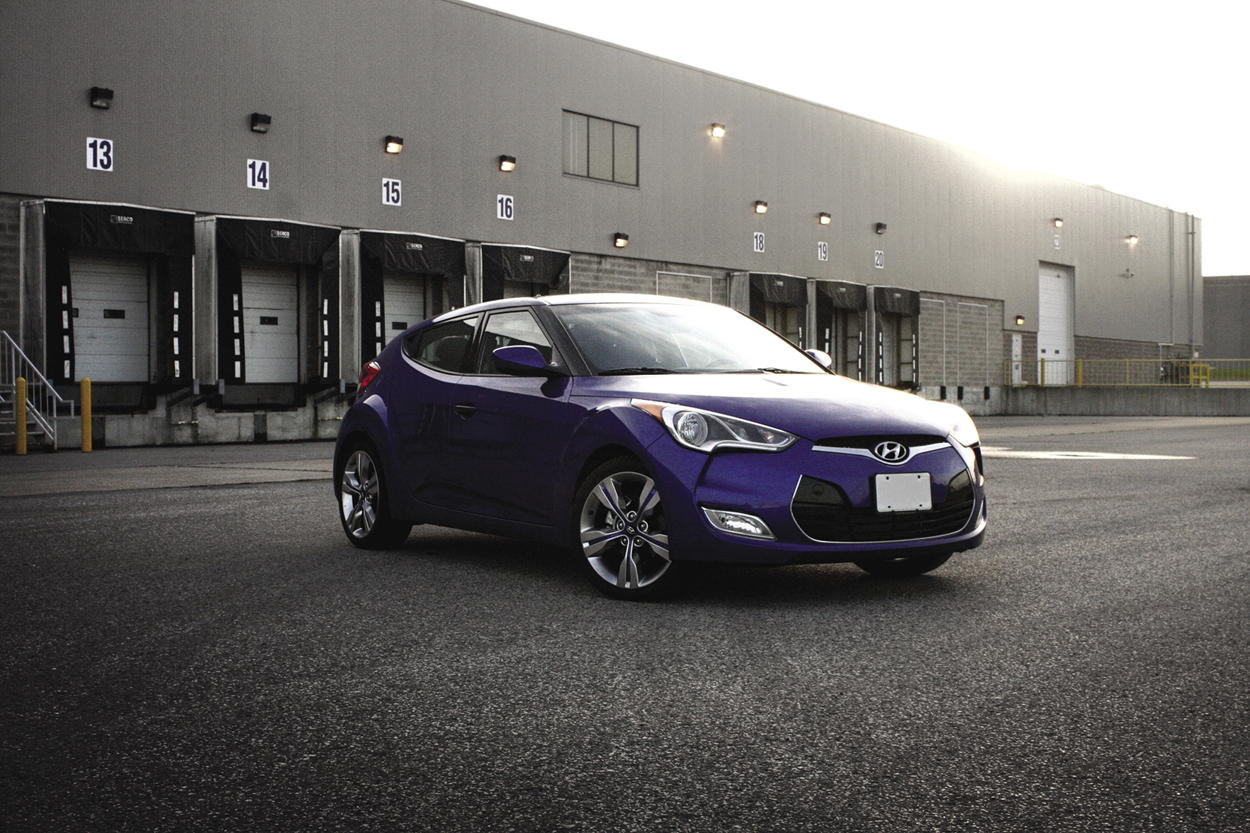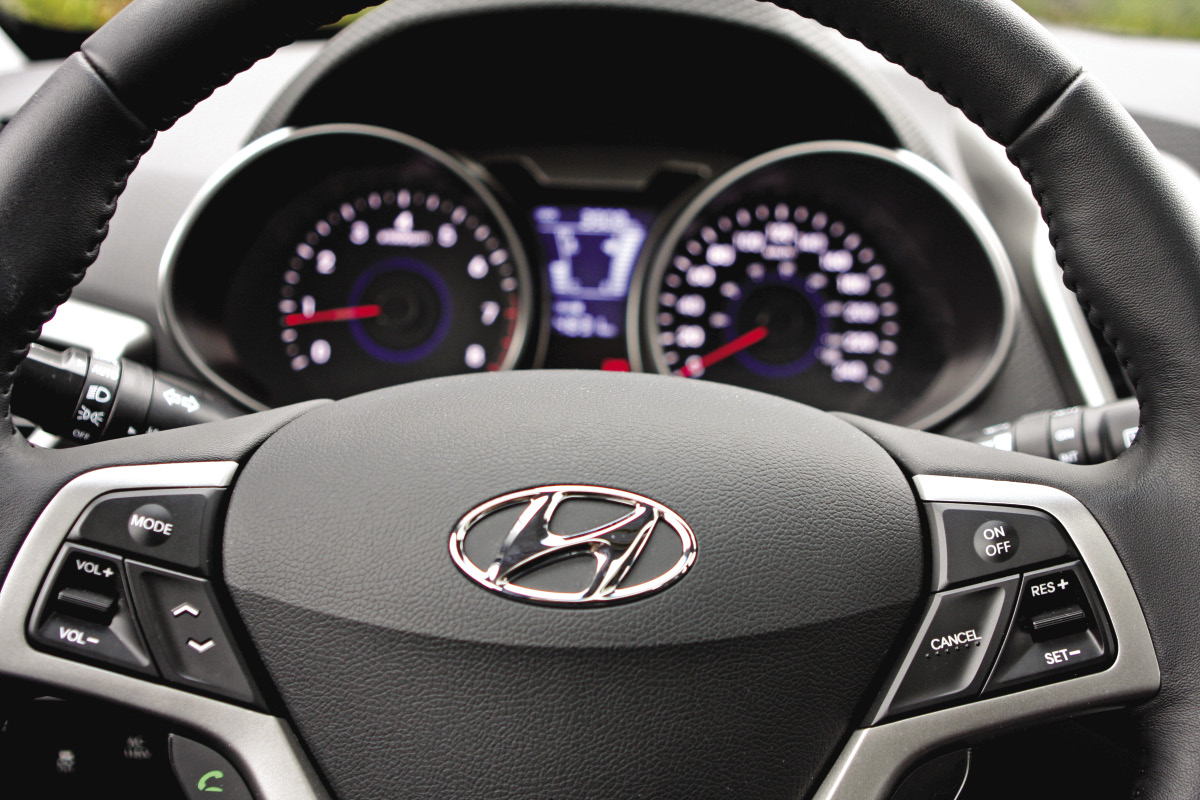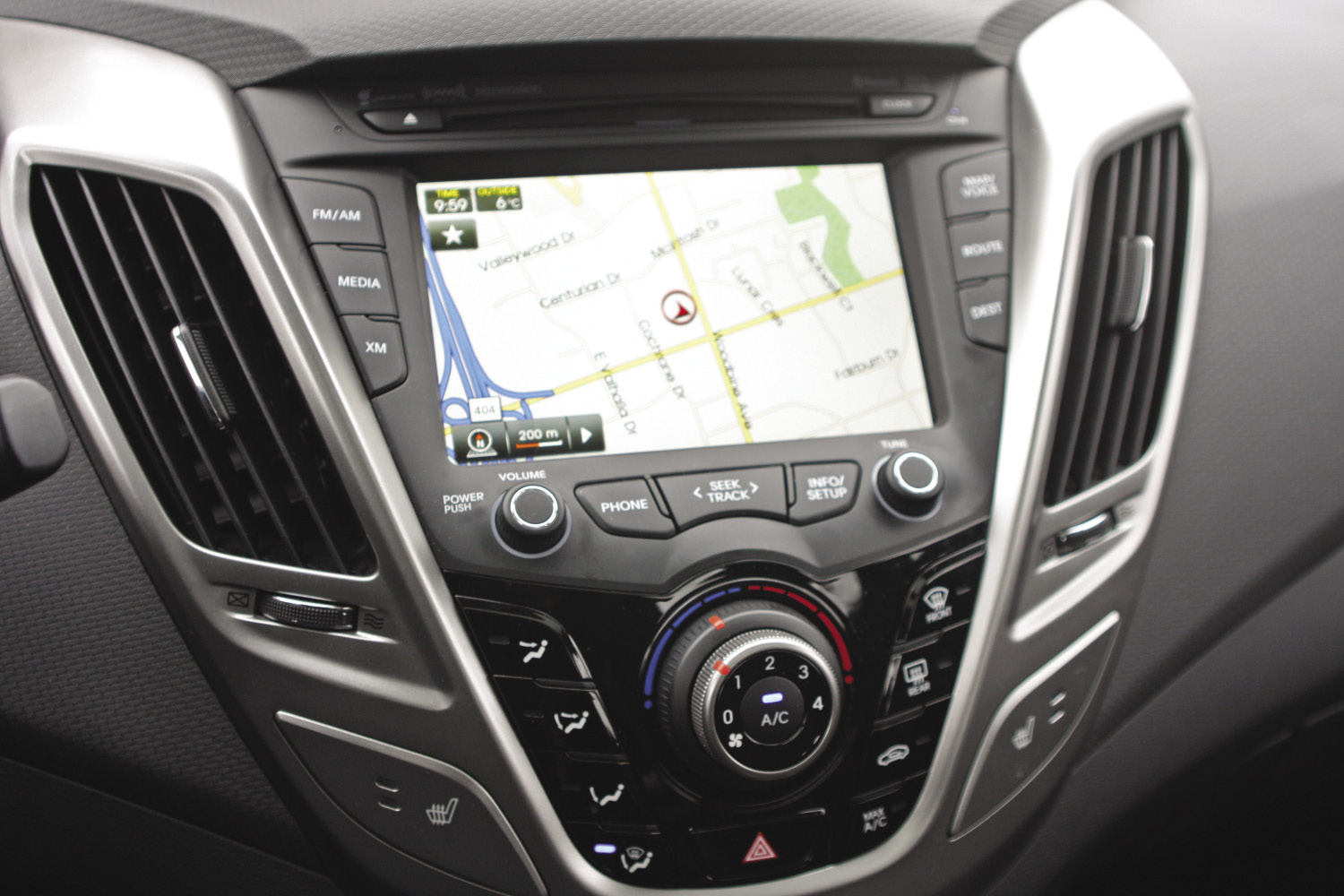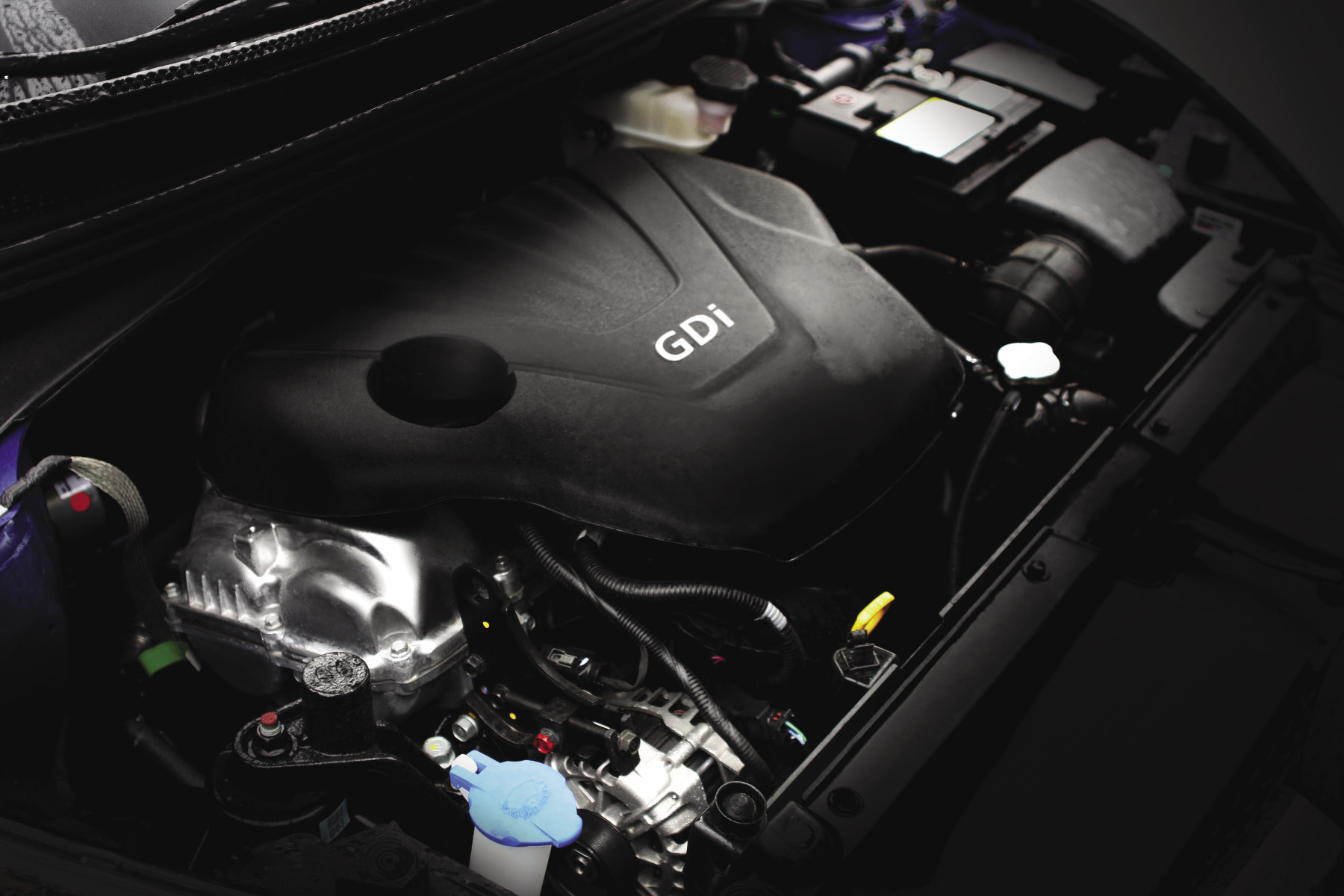
Hyundai Shakes Up the Compact Sports Coupe Segment
TORONTO – Say this much for Hyundai, the Korean automaker is certainly willing to make a statement when it comes to design – for better or worse.
From the Accent to the Elantra, the Sonata and forthcoming Genesis Coupe update, Hyundai is all in for making a visual statement with its cars, and let’s just say it has nothing to do with blending in.
Perhaps no other car in Hyundai’s lineup epitomizes its attitude towards evocative and, depending on the eye of the beholder, take it or leave it styling than the Veloster (the name is the result of combining ‘velocity’ with ‘roadster’), the compact sports coupe with a third door that went on sale last fall.
Slotted into the spot in Hyundai’s lineup that has been open since the company discontinued the Tiburon in 2008, the Veloster is squarely aimed at twenty-somethings interested in sporty (but not seat-pressing) performance that comes with lots of modern tech conveniences, and is wrapped in plenty of style at a reasonable price.
If Hyundai was seeking to make the Veloster stand out in a sea of compact sports coupes and hatches, mission accomplished. With its athletic, but stubby profile, prominent nose and high rear-end hatch, it didn’t really remind us of anything on the road these days.
Comparisons have been made between the Veloster and Honda’s legendary, long-gone CR-X, but it didn’t really remind us of the revered Honda, save for the high hatch, and last we checked the CR-X never came with a third door.
Honda’s sort-of CR-X descendant, the hybrid-powered CR-Z, is in the same class in terms of its overall proportions, but it isn’t as powerful as the Veloster nor does it feel as aggressive. Although we thought the CR-Z had plenty going for it when we drove it last year (PRN, April 2011), it seems somewhat vanilla compared to the Veloster, both inside and out.
Whereas the CR-Z struck us as Honda conservative, the Veloster is anything but, with its multitude of windswept creases and lines, sharp angles and interesting styling touches. From the inverted hoodscoop to the angled headlights, belt buckle-sized trunk lid emblem and centre-mounted twin exhaust outlets the Veloster’s look is anything but vanilla.
Inside, the cabin features lots of nice looking soft touch materials, with amenities that included heated leather seats, push button start and a massive panoramic moonroof, among many others.
Finished in a bright royal blue, our tester came equipped with a 6-speed manual transmission (a dual-clutch automatic is also available), 18-inch alloy wheels and some extras like an upgraded stereo with navi and Bluetooth integration thanks to the optional technology package.
Impressions
Walking up alongside our tester from the rear, we were struck by its athletic stance, which is augmented by the large alloys and sporty centre mounted exhaust.
Maybe it’s just the nature of stubby coupes, but the Veloster looked fast and nimble sitting still and its smiley face grille and angled headlights suggested a playful, aggressive personality.
 Sliding behind the wheel, the driving position was suitably low-slung, but comfortable thanks to the supportive and snug fitting leather buckets.
Sliding behind the wheel, the driving position was suitably low-slung, but comfortable thanks to the supportive and snug fitting leather buckets.
As mentioned earlier, the Veloster (particularly those equipped with the Tech package, like ours was) is nicely finished. The materials looked and felt high-end with a mix of textured and smooth surfaces finished in charcoal, black and matte silver accents. The buttons and switches had a smooth operation about them, and the centre stack and instrument cluster benefitted from lots of soft blue backlighting. All of these design cues helped to make for a pleasing driving environment.
The third door, located on the passenger side and hinged at the front, might seem gimmicky at first blush, but we can see how it would be handy for unloading groceries, bulky hockey bags and kids with relative ease. The door handle’s placement is in the window trim – one of our staffers took a long time to find it – so it might take an extra second to locate.
The one serious gripe we had with the Veloster’s layout is rearward visibility. Many coupes suffer from similar problems – sharp styling comes with a price, after all – but the Veloster will take some getting used to, especially for drivers used to larger rear windows and windshields.
Because the rear windshield is essentially parallel to the ground, the driver must instead rely on a relatively small, narrow panel in the back of the hatch to see what’s behind. The window does come with a rear wiper (one of the smallest we’ve ever seen) which worked quite well, but the narrow perspective felt bunker-like at first.
The push button ignition at the bottom of the centre stack brought the all-new 1.6 litre DOHC 4-cylinder Gamma engine to life. As is the case with many 4-cylinder mills these days, the Veloster’s powerplant is fairly quiet until pushed hard. When we chose to mash the accelerator, the engine made its presence known, but not in an exceptionally buzzy or harsh fashion.
The Veloster’s 138 max horsepower comes at 6,300 rpm, so you’ll definitely be aware of the four-banger with the engine spinning that fast. Peak torque is a modest 123 lb-ft. which when combined with the car’s 1,700 kg bulk, produces acceleration times that are just average. Several published 0-60 mph (0-96 km/h) figures we’ve seen were in the mid-nine second range.
 While Hyundai never intended for the Veloster to be a fire-breathing track beast, driving this car for a week made us realize that, despite its snappy looks, the car could really use more power. Happily, Hyundai has that covered – a turbocharged version (201 hp) of the Veloster is due later this year, and we look forward to getting our mitts on one.
While Hyundai never intended for the Veloster to be a fire-breathing track beast, driving this car for a week made us realize that, despite its snappy looks, the car could really use more power. Happily, Hyundai has that covered – a turbocharged version (201 hp) of the Veloster is due later this year, and we look forward to getting our mitts on one.
Power shortcomings aside, we we’re impressed with the Veloster’s mechanicals. The suspension – MacPherson struts up front, Torsion beam (Hyundai calls it a V-beam) axle in the rear with front and rear stabilizer bars – was firm, but felt well-sorted and soaked up the many imperfections in Toronto-area roads with ease.
The six-speed manual worked well for the most part – smooth engagement allowed us to row through the gears with relative ease, and the pedal had good feel without being too stiff. We did note on a few occasions, however, some balkiness when attempting to downshift into second gear. Because it happened with a press vehicle – cars that typically endure a lot of punishment – it’s not something potential buyers should be overly concerned about, but it did surprise us all the same.
In all, the Veloster is a worthy new entrant into the compact sports coupe segment. The whizbang styling certainly won’t appeal to all – although it grew on us during our time with it – and it’s not going to dust anyone at a stop light, but it’s packaged well, delivers excellent fuel economy and is priced in the sweet spot for a large chunk of the under-30 crowd Hyundai is targeting. On that score, the Veloster looks to be primed and ready for success.
But with that being said, we’re excited for the arrival of the turbo version – big time.

2012 Hyundai Veloster Specifications:
Base price / as tested: $18,999 / $22,499
Engine: 1.6 litre DOHC 4-cylinder with CVVT
Output (manufacturer): 138 hp
Transmission: 6-speed manual
Platform: FF
Fuel Consumption (manufacturer): city – 7.2L/100 km (32.67 mpg); highway – 4.9L/100 km (48 mpg); combined – 6.2L/100 km (37.94 mpg)






















